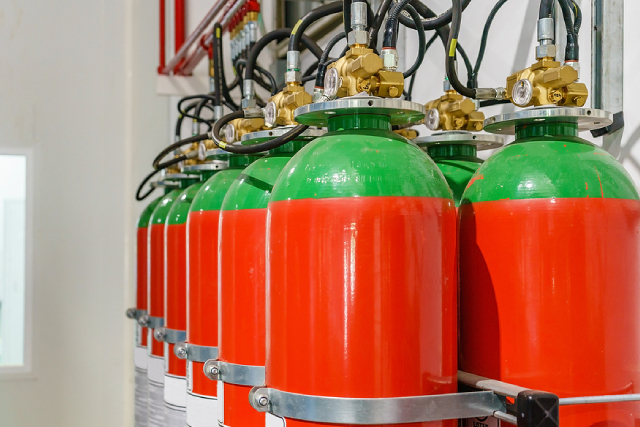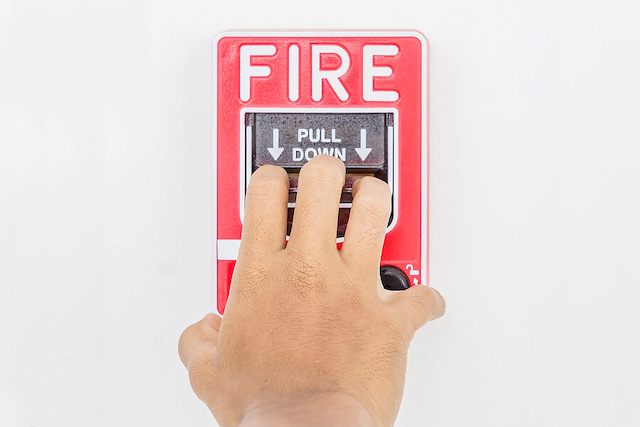Fire safety managers and property owners looking for guidance on whether clean agent fire suppression systems are a good solution for their needs must first consider a few things. This is because clean agent fire suppression works well in certain buildings and environments, meaning it is vital to understand the criteria for its installation. Below, we go over the details of this fire suppression system to guide your decision-making.
The “clean” way to fight fires
Clean agents differ from sprinkler systems in that they do not cause collateral damage since they are stored as a liquid material, which then gets discharged as a gas of mist or fog. Certain agents are “green” or natural, made up of argon, nitrogen, or a combination of both. Automatic flooding systems output the extinguishing agent at the right concentration that can sufficiently extinguish fires by reducing or cooling the oxygen below the level where it can promote combustion. These systems are controlled by high-speed or standard smoke detection, allowing quicker response than heat-activated sprinklers. Moreover, these clean agents allow for the safe evacuation of occupants and the lack of residue and need for clean-up, contrasting with sprinklers and the water damage they cause.
Environments that benefit from clean agent fire suppression systems
- Offices, hospitals, and human-occupied spaces
Clean agent fire suppression is the best choice for environments housing electronic devices, server rooms, and critical records. Potential fires are gently extinguished with no liquid or chemicals damaging expensive equipment, essential patient records, and other documents.
- Data centres and server rooms
Highly sensitive electronic devices and mission-critical information are only a couple of indispensable items that cannot be risked getting damaged by fire, dry chemicals, or water. Clean agent systems are safe for people and equipment while still being highly effective and efficient at extinguishing fires by blanketing entire areas with a harmless agent concentration. The way they are discharged also means they can easily reach otherwise hard-to-reach areas like behind cabinets and server racks. As such, clean agent systems ensure business interruption from fires is kept to the minimum, unlike other systems.
- Logistics and transportation
Flammable cargo, electronic control and material handling equipment all present a potential fire hazard. Dry chemical agents or water in these applications could cause significant property damage as well as unwanted business interruption. As such, opting for a clean fire agent suppression system to quickly and safely extinguish fires—even inside cargo holds and electronic cabinets that other solutions cannot work effectively—is the only logical choice.
Conclusion
Given the sensitive nature of certain items and equipment in some environments, it is important to carefully consider which fire suppression system to choose to protect against the threat of fire. For buildings that cannot afford catastrophic business interruption and equipment damage, clean agent systems are the only solution that ensures swift fire suppression with little to no collateral damage.
If you are interested to learn more about various fire suppression systems, where they are best used, how to maintain them, and more, enrol in TenLearn’s online fire safety courses in Singapore today! We are a platform that hosts various SCDF-approved courses to let you keep your skills sharp and knowledge up to date while earning CPD points for every course you complete.
Get started with our FSM courses in Singapore today and start learning anytime, anywhere.


Write a public review